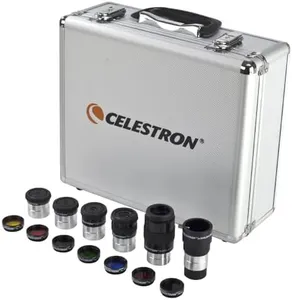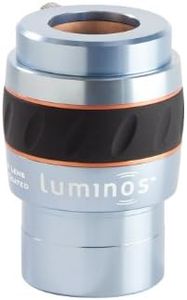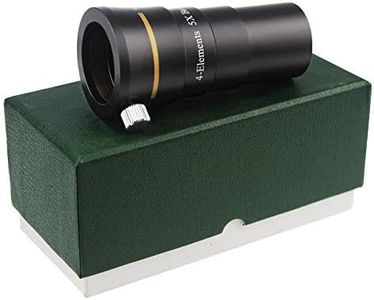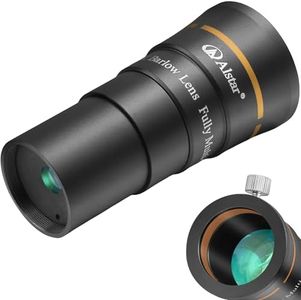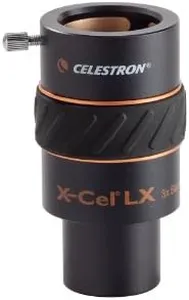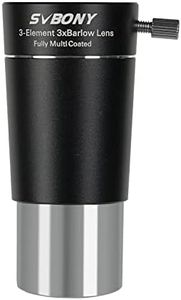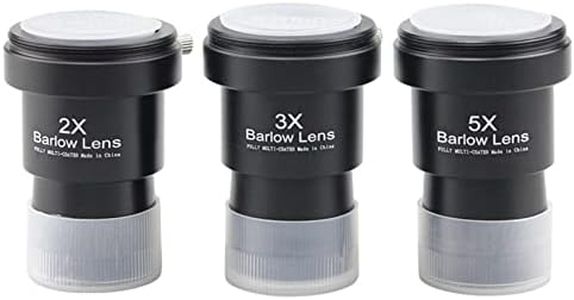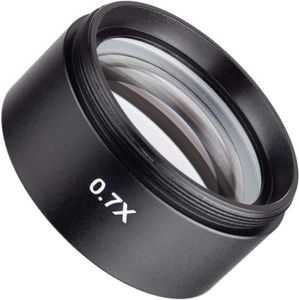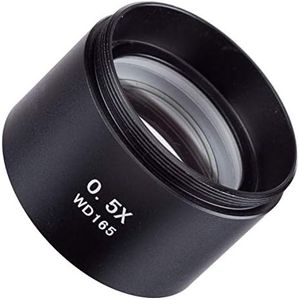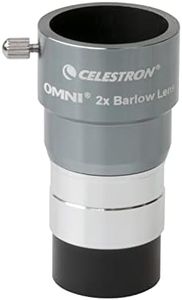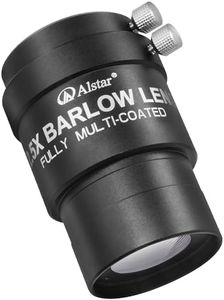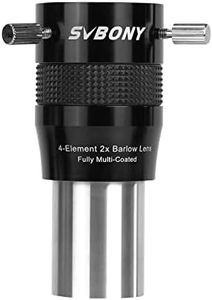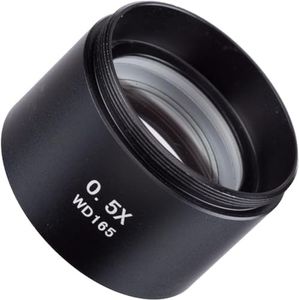We Use CookiesWe use cookies to enhance the security, performance,
functionality and for analytical and promotional activities. By continuing to browse this site you
are agreeing to our privacy policy
10 Best Barlow Lenses 2025 in the United States
How do we rank products for you?
Our technology thoroughly searches through the online shopping world, reviewing hundreds of sites. We then process and analyze this information, updating in real-time to bring you the latest top-rated products. This way, you always get the best and most current options available.

Buying Guide for the Best Barlow Lenses
Barlow lenses are an essential accessory for any amateur astronomer or telescope enthusiast. They are used to increase the magnification of your telescope, allowing you to see celestial objects in greater detail. When choosing a Barlow lens, it's important to consider several key specifications to ensure you get the best performance for your needs. Understanding these specifications will help you make an informed decision and enhance your stargazing experience.Magnification FactorThe magnification factor of a Barlow lens indicates how much it will increase the magnification of your telescope. Common magnification factors are 2x, 3x, and 5x. A 2x Barlow lens will double the magnification, a 3x will triple it, and so on. Higher magnification factors can provide more detailed views but may also reduce image brightness and clarity. Choose a magnification factor based on your observing goals: 2x is great for general use, 3x for more detailed planetary views, and 5x for high-magnification observations of the moon and planets.
Lens QualityLens quality is crucial for achieving clear and sharp images. High-quality Barlow lenses are made from premium optical glass and feature multi-coatings to reduce reflections and increase light transmission. Poor-quality lenses can introduce aberrations and distortions, degrading the image. Look for lenses with fully multi-coated optics for the best performance. If you are serious about your observations, investing in a high-quality lens will provide better results.
Barrel SizeThe barrel size of a Barlow lens must match the size of your telescope's eyepiece holder. Common sizes are 1.25 inches and 2 inches. A 1.25-inch Barlow lens is suitable for most amateur telescopes and is more compact and lightweight. A 2-inch Barlow lens is larger and can provide better light transmission, making it ideal for larger telescopes and more serious observations. Ensure you choose a Barlow lens with a barrel size that fits your telescope.
CompatibilityCompatibility refers to how well the Barlow lens works with your existing telescope and eyepieces. Some Barlow lenses are designed to work with specific brands or models, while others are more universal. Check the manufacturer's recommendations and user reviews to ensure the Barlow lens you choose is compatible with your equipment. This will help you avoid issues with fitting and performance.
Build QualityBuild quality affects the durability and ease of use of the Barlow lens. Look for lenses with sturdy construction, preferably made from metal rather than plastic. A well-built Barlow lens will last longer and provide more consistent performance. Features like compression rings can help secure the eyepiece without scratching it. Consider how often you will use the lens and in what conditions to determine the importance of build quality for your needs.
Most Popular Categories Right Now
